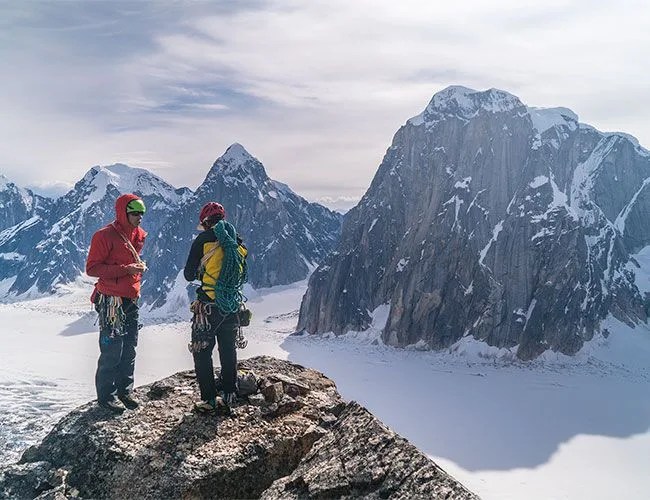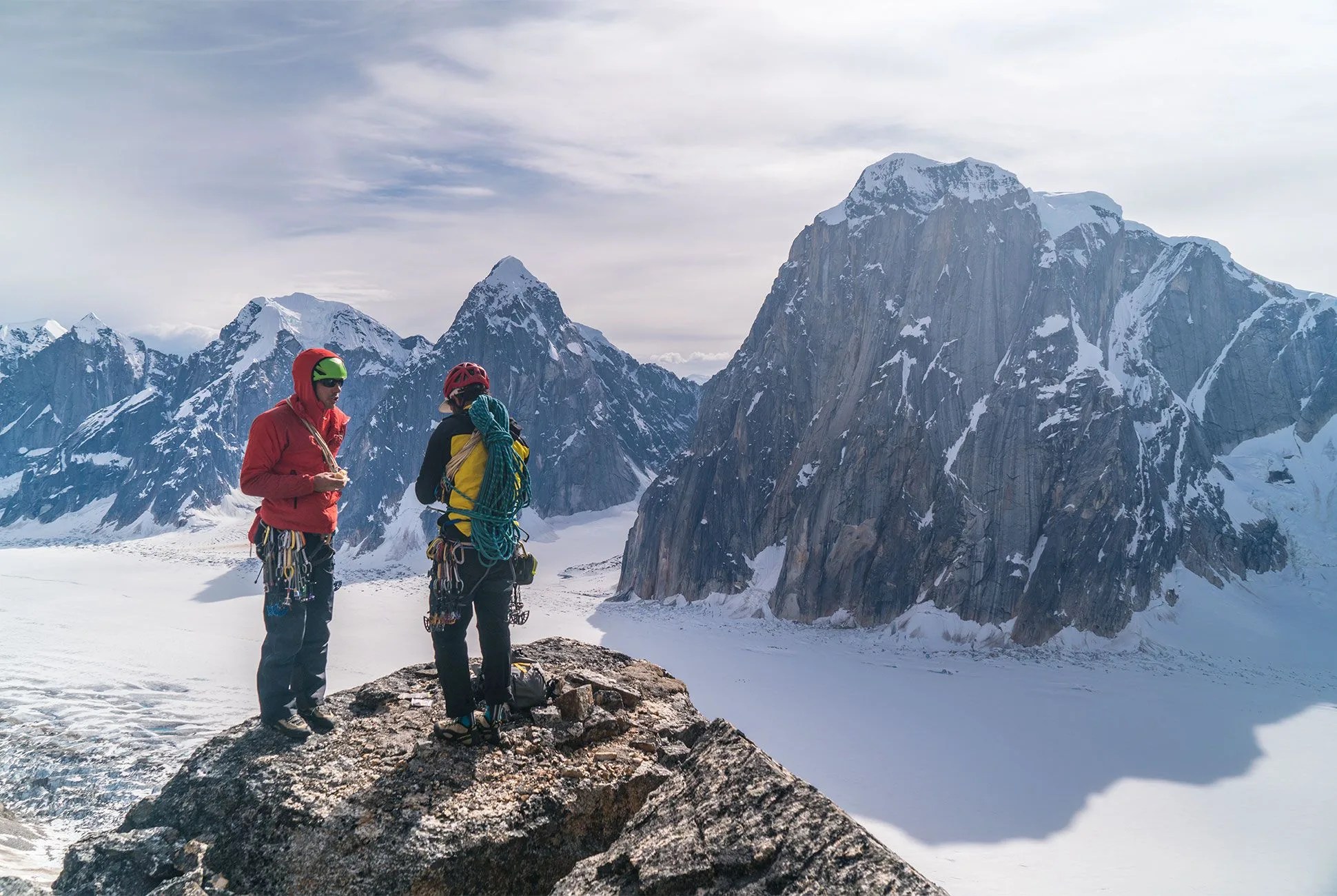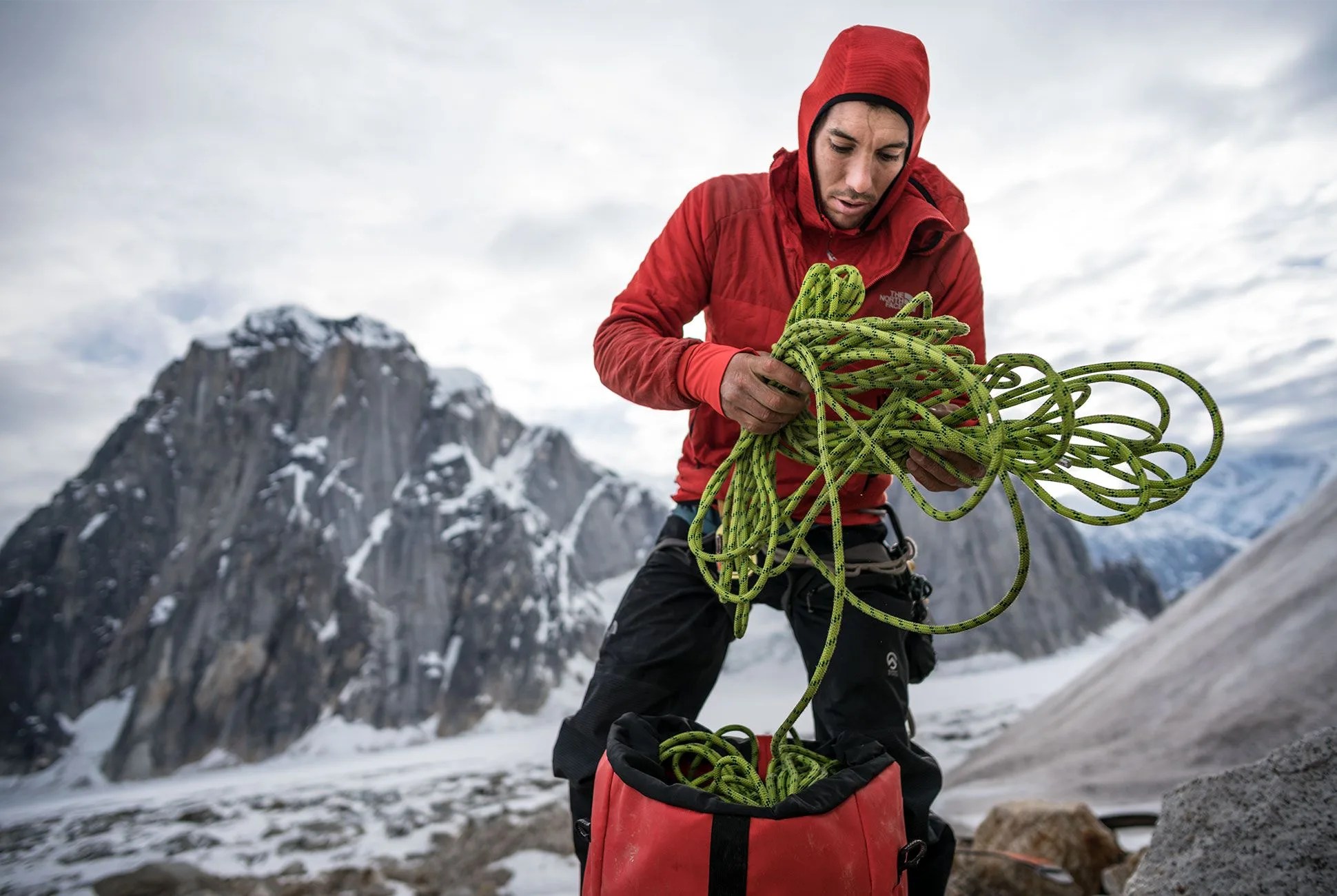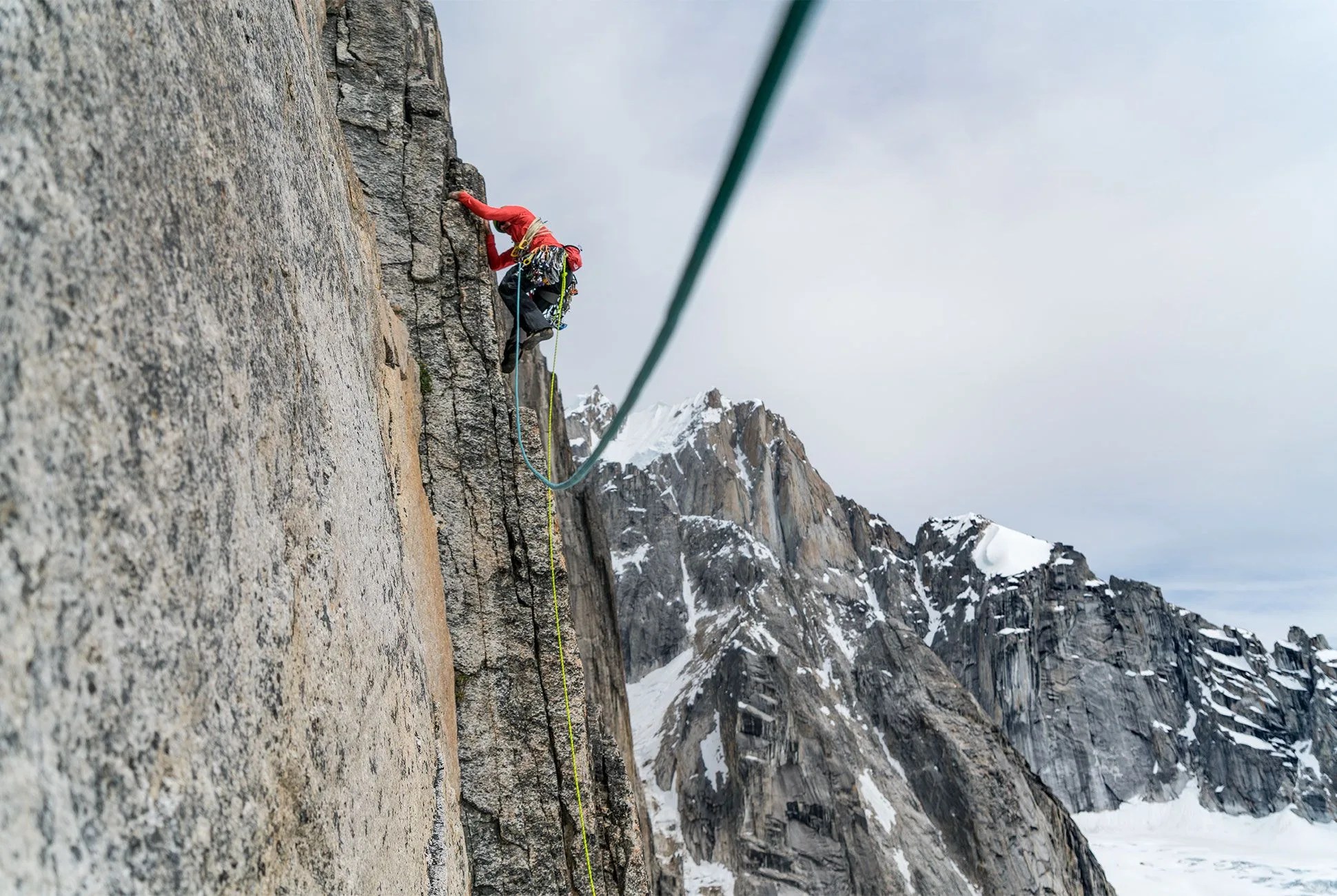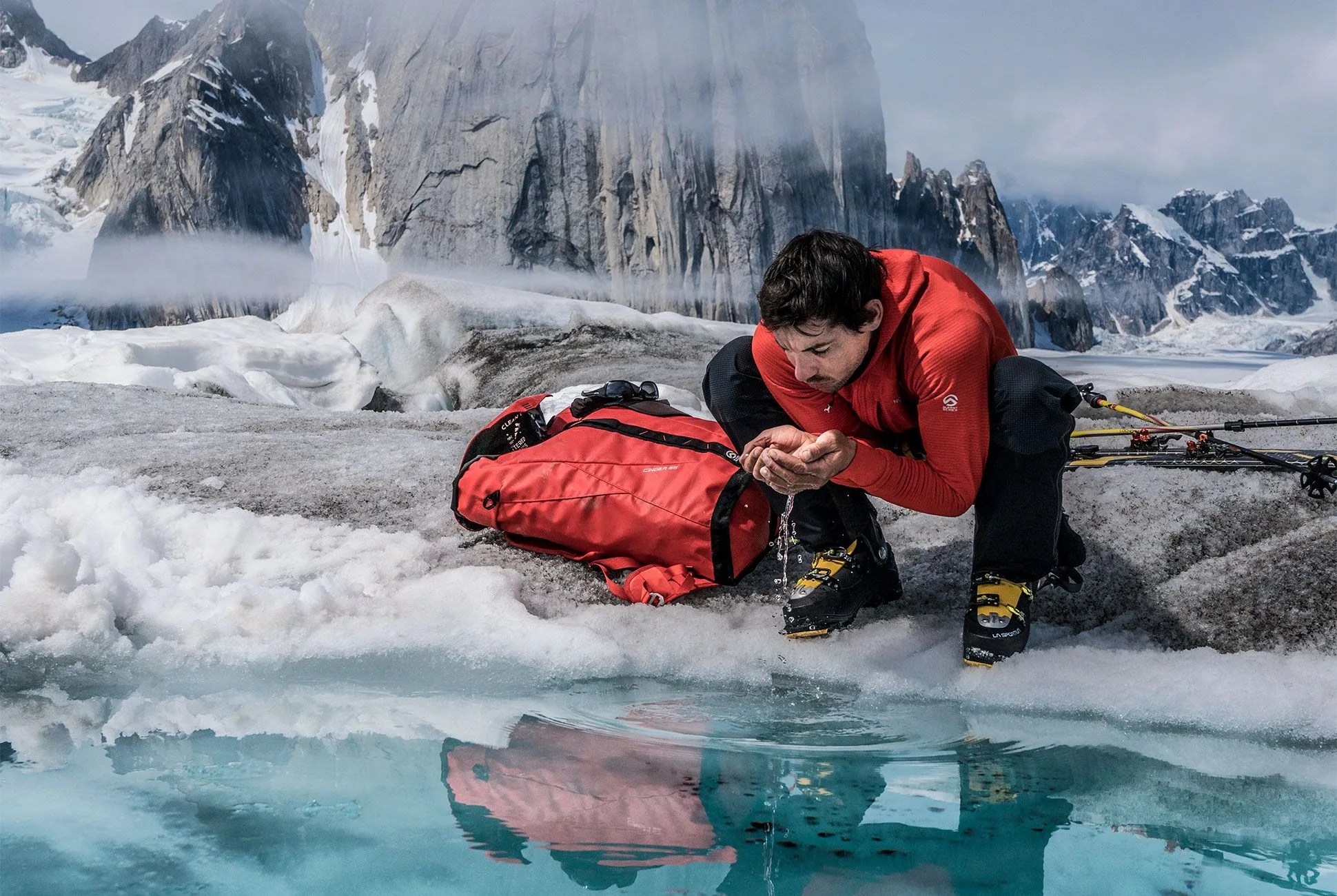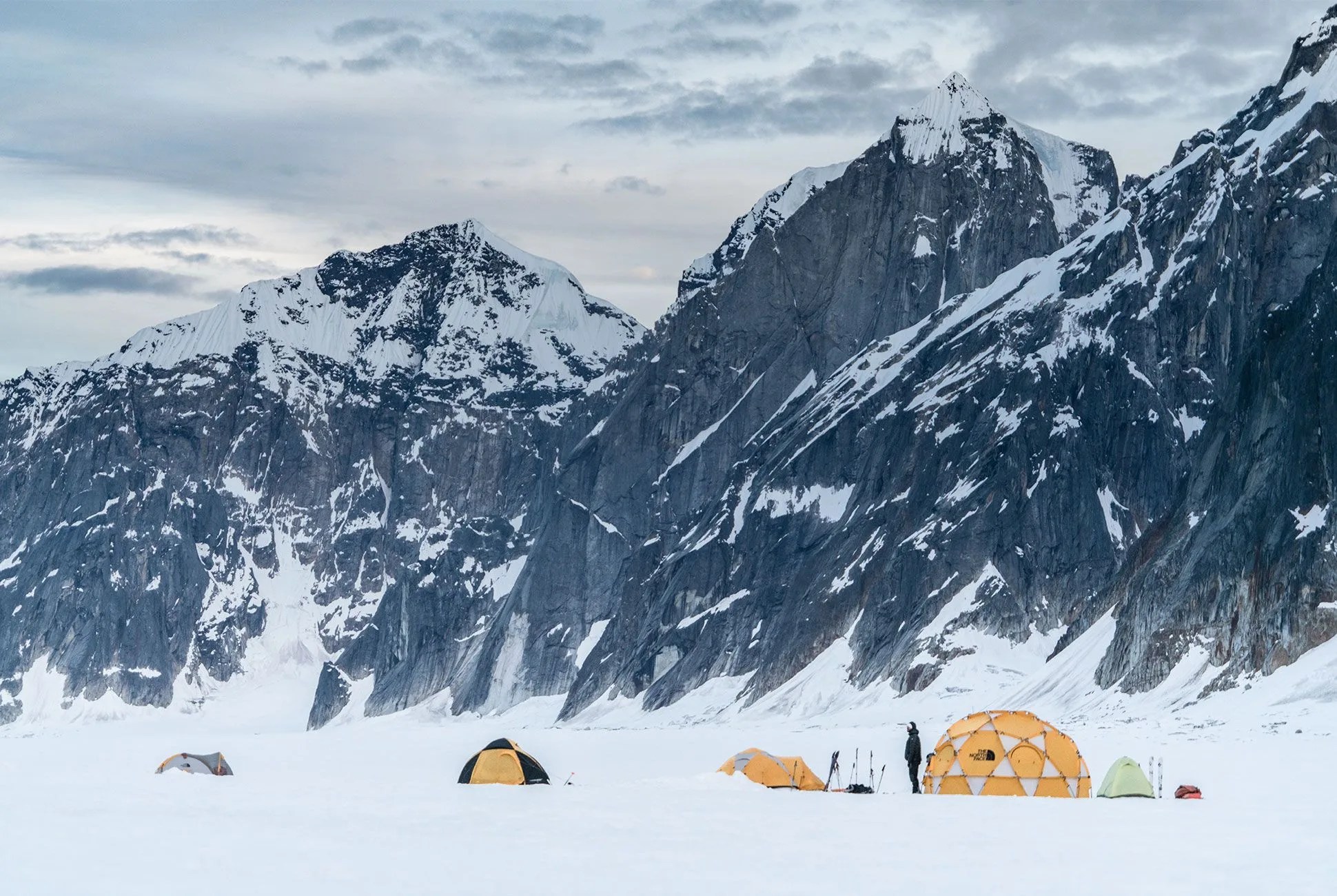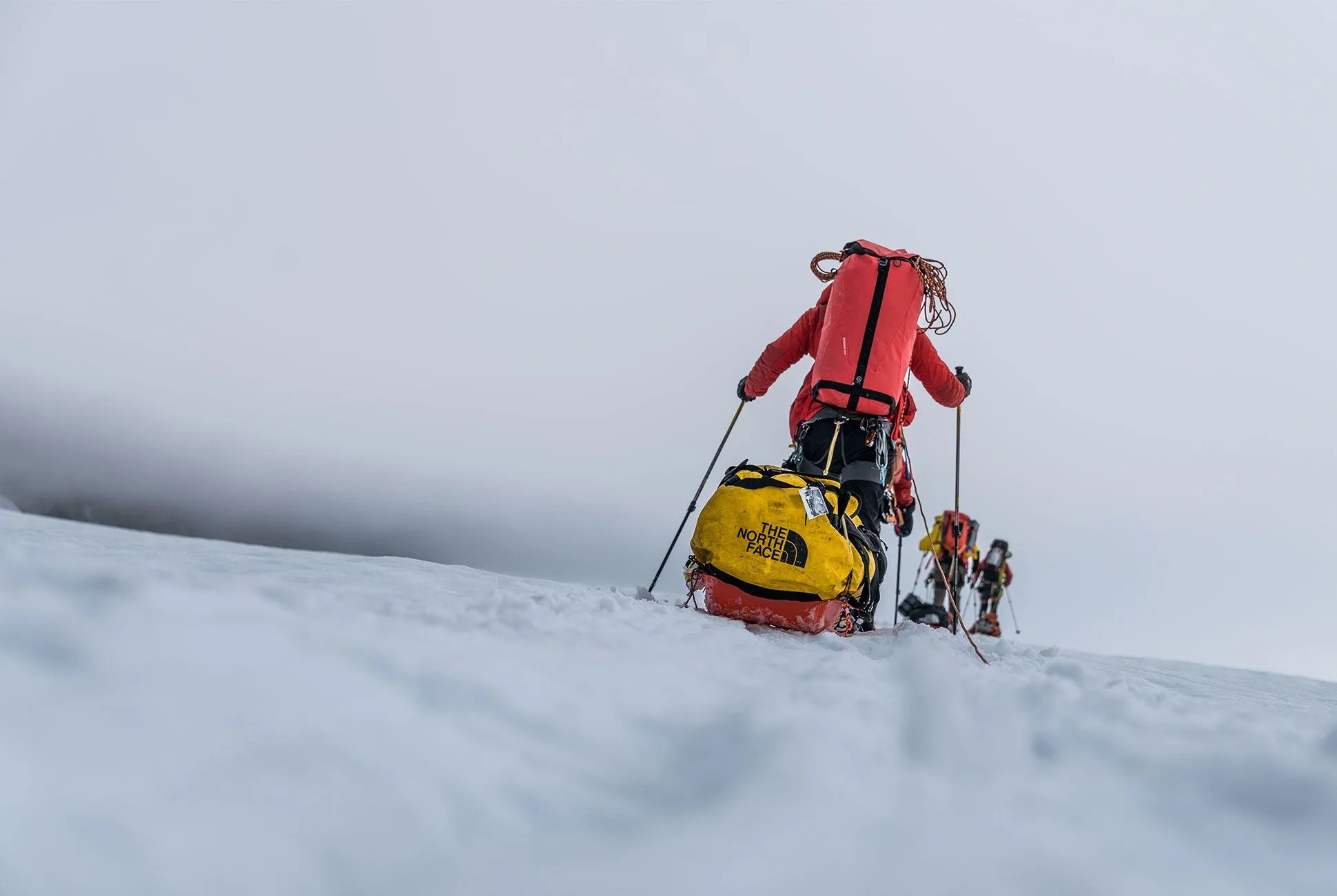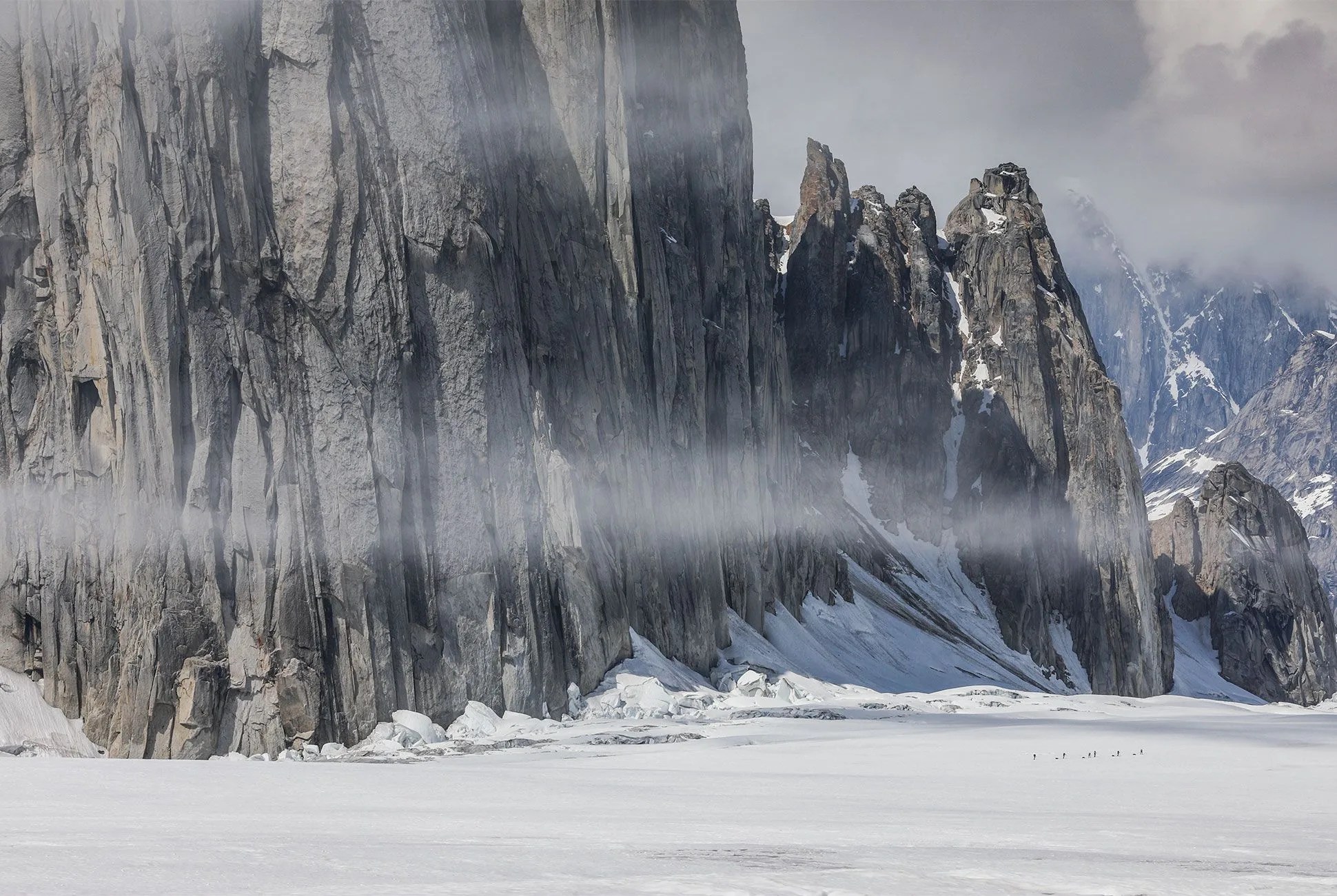
You might call Alex Honnold a simple man, a purist. He just wants to climb. The less gear, the better. Give him a pair of La Sportiva shoes and lightweight pants from The North Face, and he’ll scale El Capitan — any chalk bag slung around his waist will do.
But now that he’s taking on one alpine climb per year, Honnold has had to adjust to new territory. “It’s not just the cold,” he says. “There’s just a lot of self-care that needs to be done — sunscreen, sunglasses, layers, making sure you don’t get wet, making sure you don’t freeze. It’s a lot to think about all the time.”
So who better to be his partner in Alaska’s mammoth Ruth Gorge than complex climber-cum-artist/filmmaker Renan Ozturk. Known for taking on such challenges as the first ascent of the 20,700-foot Mount Meru with Conrad Anker and Jimmy Chin only five months after a near-fatal ski accident, Ozturk is used to wielding pounds of mountaineering equipment on snowy terrain with his RED camera and paintbrushes in tow. He’s a man who knows frostbite, knows the importance of the right gear and is certainly not a purist.
The Ruth Gorge in Denali National Park rivals the expanse of the Grand Canyon with walls protruding some 5,000 feet from the glacier and extending nearly 4,000 feet below the ice. The duo, along with alpinist Freddie Wilkinson, set out on Honnold’s first alpine mission to Alaska in 2013: attempting to ascend the Wine Bottle Tower (“a really beautiful line,” says Ozturk) on the eastern face of Mount Dickey, a 5,250-foot wall of granite, the longest free climb in North America, sent only once before as an aid climb in 1988.
“You are always limited by nature.”
